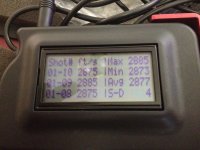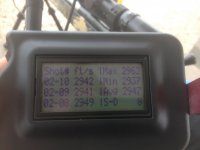H4350 pushing Berger 6mm 109 LRHT in a 6GT Alpha OCD case for all questions below.
Powder? How much should .1-.2 grains of powder variance change muzzle velocity? I'm currently using a ChargeMaster with a V4 on order and expected this month.
Neck tension? Using quality dies, how much difference can neck tension be affected case to case? This is difficult for me to measure as I don't seat with a force gauge. My seat of the pants "feel" gives very little variance, but at times one "feels" more difficult to seat vs. most of the others. Is this even measurable when seating by hand?
Shoulder setback? Again, assuming a quality die how much does shoulder setback affect FPS case to case? I'm seeing very constant measurement case to case.
What should my expectations be over a five round sample? Ten round sample? 20 round sample? 40 round sample.
Thanks for your time.
Powder? How much should .1-.2 grains of powder variance change muzzle velocity? I'm currently using a ChargeMaster with a V4 on order and expected this month.
Neck tension? Using quality dies, how much difference can neck tension be affected case to case? This is difficult for me to measure as I don't seat with a force gauge. My seat of the pants "feel" gives very little variance, but at times one "feels" more difficult to seat vs. most of the others. Is this even measurable when seating by hand?
Shoulder setback? Again, assuming a quality die how much does shoulder setback affect FPS case to case? I'm seeing very constant measurement case to case.
What should my expectations be over a five round sample? Ten round sample? 20 round sample? 40 round sample.
Thanks for your time.



